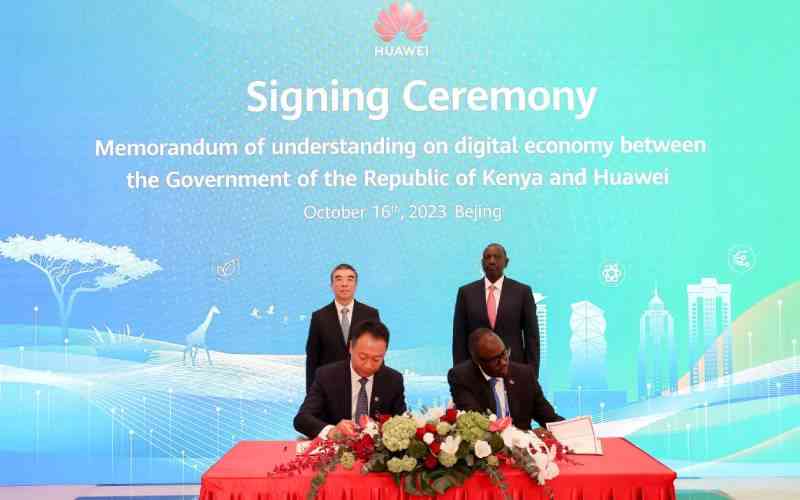NAIROBI: Kenyan consumers stand to win big as the battle for market share in the country’s lucrative smartphone market heats up, a move likely to see the cost of handsets come down.
New entrants like Huawei and Tecno Mobile have increased their offerings in a bid to claw some market share from handset makers Samsung and Nokia who have traditionally dominated the market.
PHONE PENETRATION
In the past two weeks, both Huawei and Tecno have launched new high-end smartphones at events attended by Information and Communication Cabinet Secretary Fred Matiang’i.
Tecno, which has increased its media campaigns, confirmed the firm’s strategy to win over new consumers from established competitors and increase its market share.
“While in the process of deepening our mobile phone penetration in East Africa, we have developed a dedicated focus on driving smartphone adoption,” said Tecno Mobile President George Zhu.
“We are committed to doing business with Kenya while addressing the mobile phone demands, and the future sees us establishing an even greater foothold, with Kenya now one of the primary technology innovation hubs in sub-Saharan Africa.”
Despite the country’s impressive mobile phone penetration, which stands at 78 per cent according to the latest statistics from the Communications Authority of Kenya (CA), the uptake of smartphones is much lower, though it has been steadily increasing.
Data from industry experts indicates that about one in four phone users in Kenya have access to a smartphones. Most users, particularly in the rural areas, have feature phones.
It is this 75 per cent of the market still on feature phones that has smartphone vendors trying to outdo each other to reap the potential gains.
Microsoft and Huawei last year entered into a partnership to launch the Windows Phone 4Afrika, a low-cost Windows 8-powered smartphone with region-specific features such as a long-lasting battery and a display that remains clear under bright sunlight.
In the last two years, Huawei has launched no less than eight products targeting both the low, mid and high-end local market segments.
The Ideos, which broke ground as the first low-cost smartphone, sold hundreds of thousands of units and still remains the most popular smartphone device in the country to date.
According to industry projections from technology firm Qualcomm, which manufacturers cellphone components, Kenya’s rapid adoption of smartphones and portable devices is set to increase even more as the cost of mobile technology development declines.
LOW COSTS
Stay informed. Subscribe to our newsletter
“The current trends in the mobile data ecosystem indicate that the cost of putting together smartphones has greatly come down, and we are set to see more affordable entry level devices make their way into the market,” said Mr Billy Owino, the director of business development at Qualcomm.
Mr Owino added that handset manufactures and operators have reaped the benefits of low production costs and the savings will likely be passed down to consumers, particularly those in developing countries.
[email protected]
 The Standard Group Plc is a
multi-media organization with investments in media platforms spanning newspaper
print operations, television, radio broadcasting, digital and online services. The
Standard Group is recognized as a leading multi-media house in Kenya with a key
influence in matters of national and international interest.
The Standard Group Plc is a
multi-media organization with investments in media platforms spanning newspaper
print operations, television, radio broadcasting, digital and online services. The
Standard Group is recognized as a leading multi-media house in Kenya with a key
influence in matters of national and international interest.
 The Standard Group Plc is a
multi-media organization with investments in media platforms spanning newspaper
print operations, television, radio broadcasting, digital and online services. The
Standard Group is recognized as a leading multi-media house in Kenya with a key
influence in matters of national and international interest.
The Standard Group Plc is a
multi-media organization with investments in media platforms spanning newspaper
print operations, television, radio broadcasting, digital and online services. The
Standard Group is recognized as a leading multi-media house in Kenya with a key
influence in matters of national and international interest.






